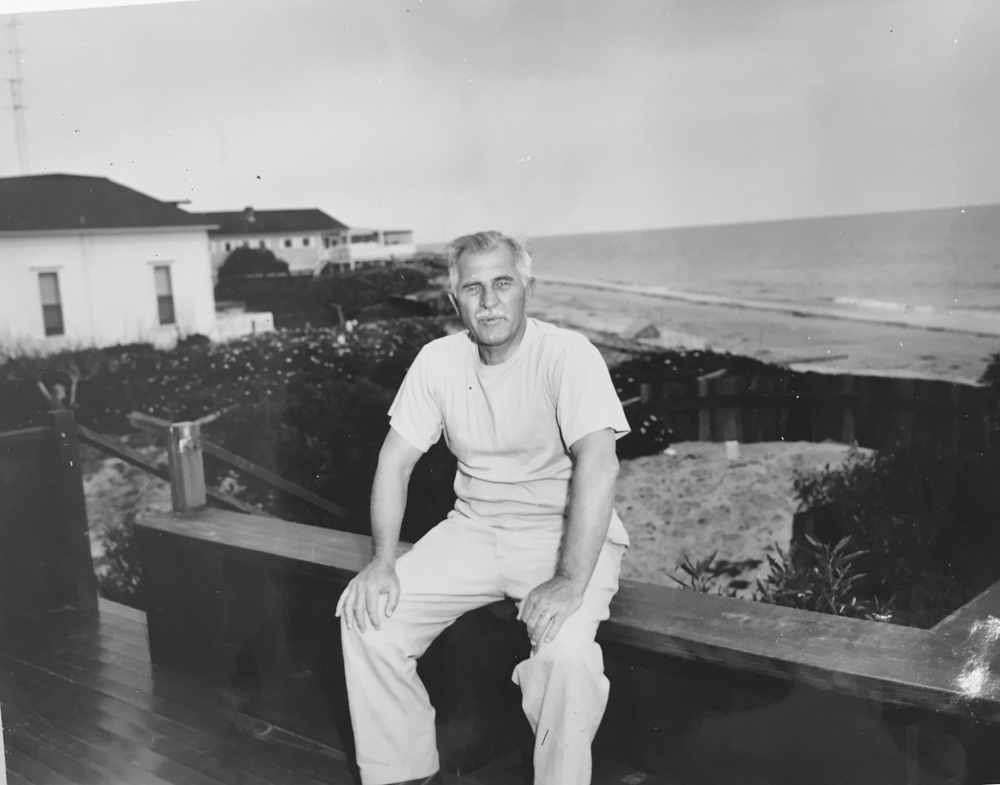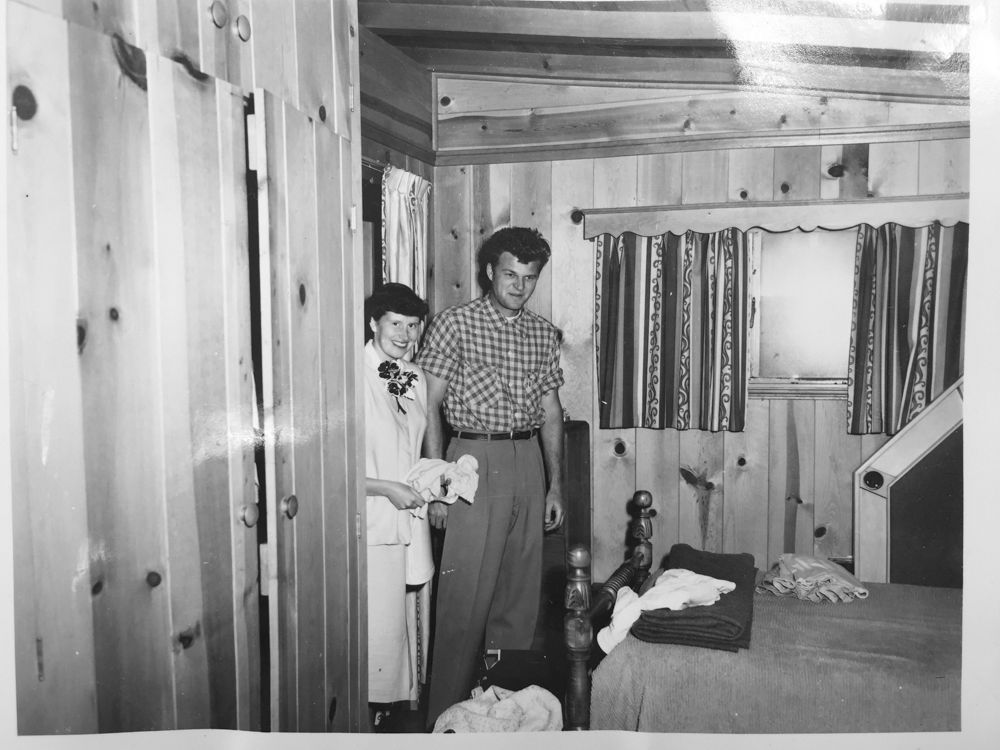Reflections on Granddad’s Padaro Lane Beach House
A Front Yard of Sand and Sea, for $21,000

In 1950, my grandfather bought a beach house on the sleepy, mostly empty lane of Padaro, paying $21,000 for the little wood home, low and wide on its sandy lot that stretched out to the mean high-tide line. At night, the view across the sea was beautifully dark until the 1960s, when oil rigs were constructed out in the Santa Barbara Channel. Though dismayed by the structures, my grandfather made the best of the new view by seeing how the lighted rigs at night resembled old Spanish galleons.
As score by score of years passed, the beach cove has been developed, and these days it features more than 100 homes that have increased sharply in value and a dozen years ago defied a widespread, national downturn in real estate prices, continuing to go up in cost. The strand has been discovered by New York tycoons, Hollywood-industry folks, and a former U.S. Secretary of State, who moved into homes that today sell for tens of millions of dollars.
In the many years after my grandfather purchased his home, the lane consisted mostly of second homes, many owned by residents of Pasadena or Bakersfield. My grandfather hailed from Bakersfield, where he ran a large independent dairy with a cattle ranch of more than 500 cows.
He credited his Santa Barbara visits with keeping up the health of his mind and heart, as his work was stressful, beginning with the launch of Wayne’s Dairy in the 1930s when he went against some of Bakersfield’s Depression-era politics. Granddad took the step of employing many workers who’d just arrived in the county, fleeing the Dust Bowl of Arkansas and Oklahoma. They were known at that time as Arkies and Okies. He incurred the wrath of many fellow prominent businessmen who did not want the exceedingly poor out-of-towners to settle in the area. Work and social life around Bakersfield could be bumpy — surely rude and very cold for Granddad. In the following decades, he developed the dairy ranch and milk plant with dozens of home-delivery milk routes. Every year, he gave away a weekend at the Padaro beach house as a prize to the milkman who added the most deliveries to his route.
The Padaro structure originally had no garage. The downstairs sunk low in the sand while the upstairs area was a couple of rooms of knotty wood-paneled walls and no doors. A simple curtain shielded entry to the small room in the back. In the ’60s, the place was remodeled and included a chic-for-the-time turquoise-colored counter in the kitchen, replete with white-leather bar chairs.

In the ’70s, the Formica flooring in an indoor porch area was covered with a pale green carpet, and the more rustic living of the place was altered with a new rule of what to do before entering from the beach. It had become necessary to do more than simply swat off sand from our feet; guests had to be de-tarred. Like many other regional beaches, the Padaro strand is sometimes covered with thick oil that sticks to the soles of the feet and other body parts of kids playing hard in the shallow surf (or a couple in a clench, should they ever roll around in a From Here to Eternity kiss). We rubbed hard with salad oil to remove the black spots and streaks.
Though a look out to sea seems to show that the oil seeps might be due to the drilling off the coast, they are not. The tar is a natural aspect of the beach. Indeed, the Santa Barbara Channel has the largest natural petroleum seep in the world, with tar deposits greater in the summer and fall.
In 2013, the family sold the beach house for $4.9 million; it’s not been altered very much since. I remain grateful for all the memories of beach walks and swims with my grandfather. For strolls along the surf, views were rife with sights of dolphins swimming a little downwardly and then a little upwardly, sewing their bodies through the ocean, and with pelicans winging widely over the waters, then stopping short midair and letting go completely in freefalls to hunt fish, their mighty beaks first.
When swimming, we grandkids used to follow Granddad out perpendicular to the waves and well beyond the breakers to where seals sometimes frolicked. On the rare occasion of seeing one, we surely left the creature ample space. On the way in, we stopped off in the swells to float in the rock-a-bye ocean. We grandkids stretched out prone like our grandfather with our heads, stomachs, and feet poking above the surface. We occupied ourselves meditatively as otters seem to do, deeply content to lounge on the seawater.



